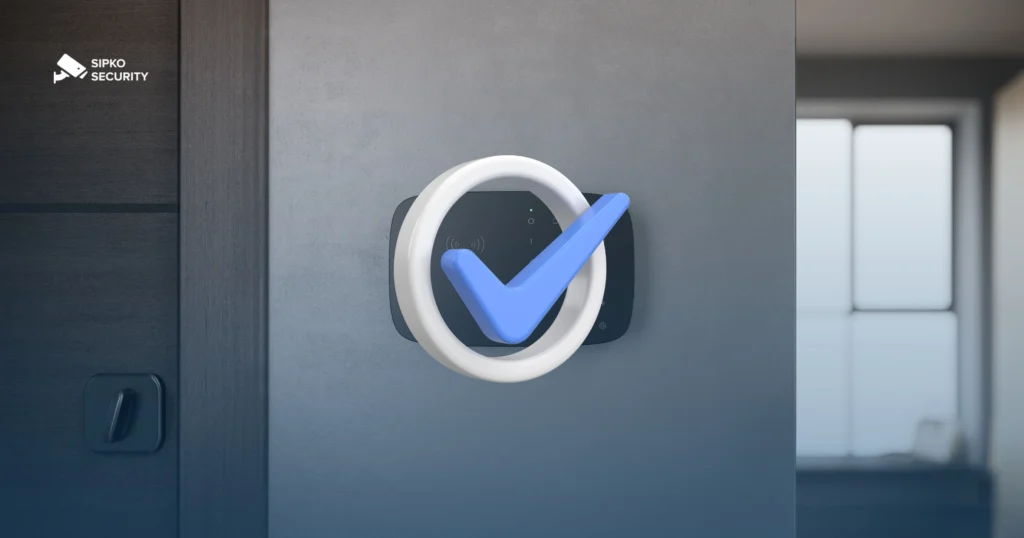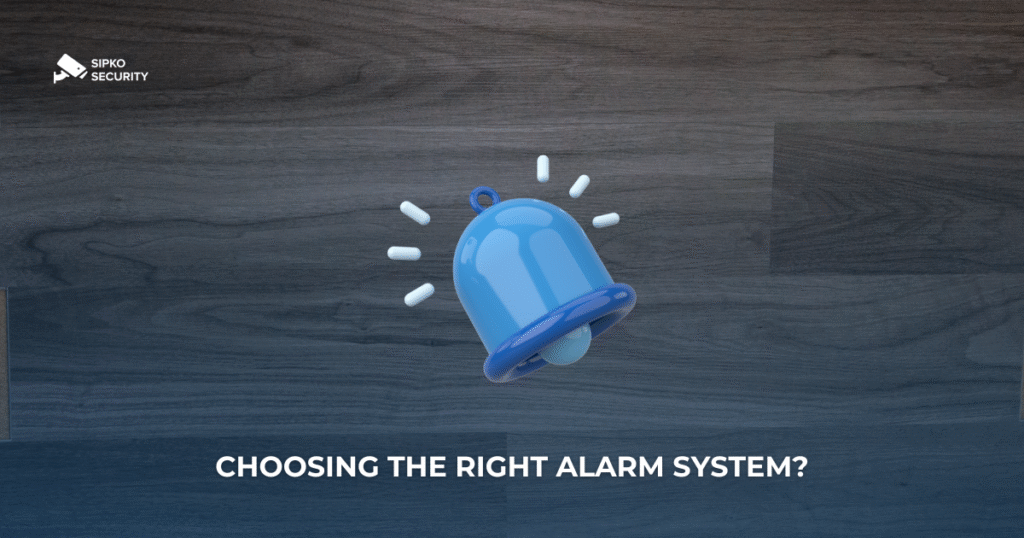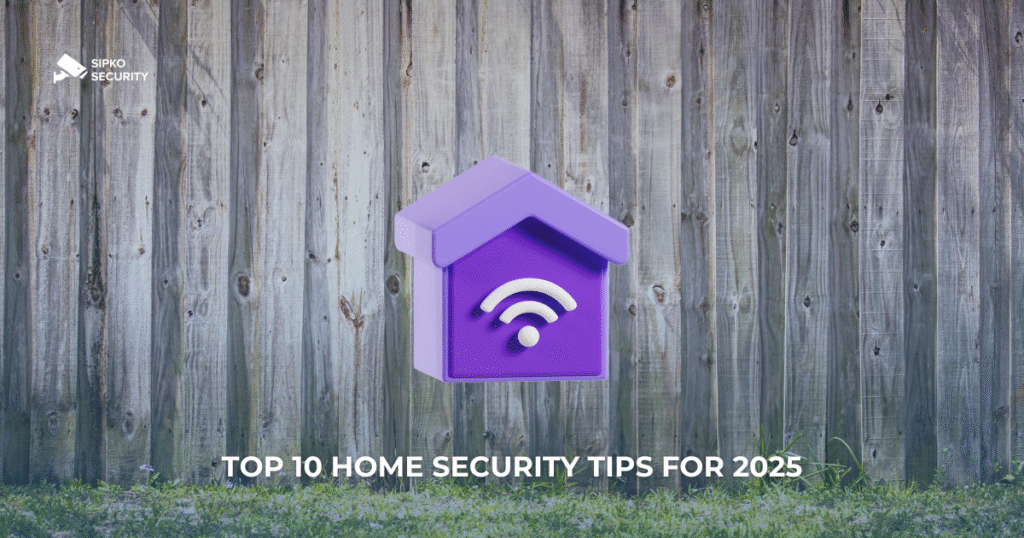At a home’s front entry, convenience, safety, and the look of your façade come together. Two technologies dominate: a video intercom (IP or modern 2-wire digital) and a smart doorbell. Both deliver live video and two-way talk, but they differ in wiring, reliability, expandability, and how they integrate with broader security—especially if you’re considering AJAX alarm devices, Dahua or Akuvox intercom ecosystems, and common Melbourne building layouts.
Quick Definitions
- Smart doorbell: A compact, camera-equipped doorbell that sends video and notifications to your phone. Many run on batteries or reuse old doorbell wiring. App-centric, typically Wi-Fi based, with motion detection and talk-back.
- Video intercom: A purpose-built entry system with an outdoor station (camera, mic, button/reader) and one or more indoor monitors (wall-mounted touchscreens). Modern systems are usually IP (PoE) or 2-wire digital retrofit, often support SIP/ONVIF, and natively control electric strikes or gates.
The Melbourne Context: What Actually Matters
- Wi-Fi vs PoE reliability: Double brick, long setbacks, and front fences can weaken porch Wi-Fi. IP intercoms on PoE are less prone to lag and missed calls.
- Door strike & gate control: Buzzing in couriers or opening a pedestrian gate is native to intercoms. Doorbells can do it with added relays/hubs, but it’s less turnkey.
- Multi-storey & dual entries: Intercoms scale cleanly to second gates/doors and multiple indoor monitors.
- Shared entrances: For duplexes/small apartments, intercom directory panels route calls to the right unit. Doorbells are single-dwelling devices.
- Recording & subscriptions: Doorbells often rely on cloud plans; intercoms can be set up with local recording and less cloud dependency.
Smart Doorbells — Pros
- Fast installation, minimal disruption (battery or reuse of bell wires).
- Compact design, rich app features; modern models add on-device AI to reduce false alerts.
- Good first step if you don’t need electric strike control.
Smart Doorbells — Cons
- Heavily dependent on Wi-Fi quality at the doorway.
- Limited, piecemeal access control (relays/hubs required for strikes or gates).
- Cloud subscriptions for history/analytics are common.
IP Video Intercoms — Pros
- Wired PoE or robust 2-wire gives crisp, low-latency calls.
- Built-in door/gate control via relays; purpose-built for access.
- Indoor monitors make answering easy for anyone at home.
- Scales to multiple doors, gates, and even multi-tenant setups.
IP Video Intercoms — Cons
- Higher complexity than installing a battery doorbell.
- Professional cabling and configuration are typically required.
Common Home Scenarios in Melbourne
1) Single-storey house with one front door and decent Wi-Fi
Best fit: Smart doorbell. It’s quick to deploy, avoids new cable runs, and delivers live video and two-way talk straight to your phone. If you don’t plan to release a strike or gate, the simplicity is ideal. Improve porch Wi-Fi with a nearby access point if signal is marginal.
2) Townhouse with front gate + front door, family members of all ages
Best fit: IP video intercom. Indoor monitors are intuitive for kids and guests, and you can unlock the gate or door from the monitor or app in a single flow. Add a second outdoor station if you have separate pedestrian and main entries.
3) Renovation or new build where pulling Ethernet is easy
Best fit: IP intercom (PoE). Wired reliability, clean power delivery, and straightforward integration with local recording make this a future-proof choice.
4) Heritage façade or constrained cabling
Best fit: Smart doorbell. Battery models minimise drilling and visible conduit. If you later add an electric strike, plan for a relay module and tidy cable path.
5) Dual-occupancy or small multi-tenant entrance
Best fit: Intercom with a multi-button or directory door station. Calls route to the right unit, and each residence can have its own monitor and mobile app logins.
Feature-by-Feature Comparison
| Feature | Smart Doorbell | IP Video Intercom (Dahua / Akuvox) |
|---|---|---|
| Power & Wiring | Battery or reuse bell wires; minimal disruption. | PoE Ethernet or 2-wire digital; professional cabling typical. |
| Network | Wi-Fi; may need a mesh/AP near the door. | Wired; stable latency and call reliability. |
| Answering Experience | Phone-only by default. | Indoor monitors + phone app; easy for anyone at home. |
| Door/Gate Control | Possible with relays/hubs; not turnkey. | Native relay control; designed for strikes and gates. |
| Multi-Entry / Multi-Tenant | Limited; single dwelling focus. | Built for multi-door and multi-unit configurations. |
| Recording | Often cloud-centric with subscriptions. | Local NVR/SIP/ONVIF options; less cloud dependency. |
| Aesthetics | Very compact form factor. | Architectural panels; keypad/RFID options available. |
| Learning Curve | Simple app usage but requires phone access for each call. | Monitor interface is appliance-like; straightforward for families. |
Tip: On phones/tablets, swipe the table sideways to see all columns. Header row and first column stay visible while you scroll.
Wiring Choices: IP vs 2-Wire Digital
True IP (PoE over Cat6) suits renovations and new builds: one cable per device for power and data, easy switching and PoE power budgeting, and straightforward integration with local recorders. 2-wire digital kits are designed for retrofits where pulling Ethernet is difficult; you retain robust audio/video over existing 2-wire loops, with some bandwidth/expansion trade-offs compared to full IP.
Dahua vs. Akuvox for Residential Intercoms
Dahua
- Broad ecosystem with outdoor stations, indoor monitors, and both IP and 2-wire kits.
- Tight synergy with CCTV recorders and apps; ONVIF streams for third-party recorders.
- Installer familiarity across Melbourne; common choice when bundling with Dahua CCTV.
- Scalable to multiple doors/gates; clean unlock workflows from the monitor.
Akuvox
- SIP-first approach with polished outdoor stations and modern monitors.
- Access control options (keypad/RFID) and multiple relays in certain models.
- Design-forward hardware that suits architected entries and designer gates.
- Documented paths for integration with third-party systems in select setups.
Integration with AJAX Security
There are two pragmatic integration paths depending on your preferred entry device:
- AJAX Doorbell route (smart doorbell): If your alarm backbone is AJAX, an AJAX-branded doorbell keeps everything in a single app. Expect on-device AI for filtering people/pets/vehicles, a wide field of view, and two-way talk. Ideal when you don’t need native strike control and want rapid deployment.
- IP Intercom route (Dahua/Akuvox) with automation: Use an AJAX Relay to pulse an electric strike or gate and build scenes around arming states or button presses. This supplements (not replaces) the dedicated intercom experience: you still answer on the intercom monitor or app, but you gain unified lock logic alongside AJAX intrusion sensors.
Some Akuvox configurations additionally document synchronisation with alarm states in certain combinations of monitors and door phones. Always confirm model-to-model compatibility and firmware prerequisites before purchase.
Locks, Gates, and Day-to-Day Usability
- One-tap unlock from an intercom monitor is the smoothest “answer → speak → open” flow.
- For smart doorbells, unlocking is possible but often spans multiple devices/apps unless you wire a relay into the same workflow.
- Consider strike type (fail-secure vs fail-safe), power supply placement, and cable protection, especially on front fences.
Reliability and User Experience
- Missed calls with doorbells usually trace to marginal Wi-Fi or cloud push delays. A porch AP or wired backhaul for the nearest mesh node helps.
- Intercoms shine for households: loud ring on the monitor, instant video, and a clear unlock button—no phone-finding required.
- Keep firmware current and document admin credentials; label power supplies and PoE ports for future servicing.
Scores (0–100) are illustrative to show typical strengths. Larger bars indicate stronger fit for the factor.


